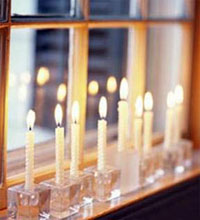 My grandmother, Nan, loved to receive shirt boxes at Christmas every year. Not shirts, just the boxes. After Christmas, my mom and I would bring them over her house, where she would stack them in a closet, then insist we sit down at the kitchen table and have something to eat.
My grandmother, Nan, loved to receive shirt boxes at Christmas every year. Not shirts, just the boxes. After Christmas, my mom and I would bring them over her house, where she would stack them in a closet, then insist we sit down at the kitchen table and have something to eat.
Wondering what she did with all those boxes? She used them store her pizzelle cookies. She needed a lot of boxes because she made a lot of pizzelles – for birthdays, anniversaries, and holidays. It's not just my grandmother, all Italians enjoy them for celebrations.
Pizzelles are round Italian waffle-like cookies made from flour, sugar, eggs, and butter and are typically flavored with anise or vanilla. The name pizzelle comes from the Italian pizze, meaning "flat" or "round."

 No wonder I rarely got a tree. It’s just too much work. Going out to buy it. Schlepping it home. Carting it inside. Pine needles everywhere. Finding the box with the decorations in storage. Untangling the lights. Discovering that only some are still working. I’m not that together. I have zero organizational skills. Hey, if magical elves appeared in my home to set up the tree, and I didn’t have to go to the lot or do anything, I would reconsider.
No wonder I rarely got a tree. It’s just too much work. Going out to buy it. Schlepping it home. Carting it inside. Pine needles everywhere. Finding the box with the decorations in storage. Untangling the lights. Discovering that only some are still working. I’m not that together. I have zero organizational skills. Hey, if magical elves appeared in my home to set up the tree, and I didn’t have to go to the lot or do anything, I would reconsider. I associate mail order food with my father. When I was growing up, he and I had very few connections. He took me to only one professional football game. He never came to Back-to-School Night and had no interest in any of my hobbies. I remember him as dour, not very talkative and disapproving. I was part of his second family and he was, I’m certain, just a bit too old to have a young kid running around.
I associate mail order food with my father. When I was growing up, he and I had very few connections. He took me to only one professional football game. He never came to Back-to-School Night and had no interest in any of my hobbies. I remember him as dour, not very talkative and disapproving. I was part of his second family and he was, I’m certain, just a bit too old to have a young kid running around.  It’s not easy being Jewish during the Christmas season, especially if
you’re a kid. Chanukah is great, don’t get me wrong. Presents for eight
nights in a row. Lighting the candles and watching them flicker in the
menorah until they gradually fade away. And I’m a big fan of the latke.
But compared to Christmas? Really?
It’s not easy being Jewish during the Christmas season, especially if
you’re a kid. Chanukah is great, don’t get me wrong. Presents for eight
nights in a row. Lighting the candles and watching them flicker in the
menorah until they gradually fade away. And I’m a big fan of the latke.
But compared to Christmas? Really? If you have any Canadian friends who are good cooks, they can sometimes
go to the effort to recreate dishes often referred to in Christmas
Carols. Its that whole British thing and “Hey, I’m a Royal Subject,
eh?” But after Pfeffernusse, Sugar Cookies, Flaming Plum and Figgy Pudding,
parties with lavish cheese plates and the holiday Honeybaked Ham, I get
a little toxic.
If you have any Canadian friends who are good cooks, they can sometimes
go to the effort to recreate dishes often referred to in Christmas
Carols. Its that whole British thing and “Hey, I’m a Royal Subject,
eh?” But after Pfeffernusse, Sugar Cookies, Flaming Plum and Figgy Pudding,
parties with lavish cheese plates and the holiday Honeybaked Ham, I get
a little toxic.
